Capillary Sensor for Detection of Amphetamine Precursors in Sewage Water
Abstract
1. Introduction
2. Materials and Methods
3. Results
4. Patents
Author Contributions
Funding
Conflicts of Interest
References
- United Nations. Booklet 4 Cross-Cutting Issues Evolving Trands and New Challenges. World Drug Report. 2020. Available online: https://wdr.unodc.org/wdr2020/index.html (accessed on 11 January 2021).
- De Ryckea, E.; Tryndac, A.; Jaworowicz, M.; Dubruelb, P.; de Saegera, S.; Beloglazovaa, N. Capacitive sensing of an amphetamine drug precursor in aqueous samples: Application of novel molecularly imprinted polymers for benzyl methyl ketone detection. Biosens. Bioelectron. 2021, 172. [Google Scholar] [CrossRef] [PubMed]
- Hauser, F.M.; Hulshof, J.W.; Rößler, T.; Zimmermann, R.; Pütz, M. Characterisation of aqueous waste produced during the clandestine production of amphetamine following the Leuckart route utilising solid-phase extraction gas chromatography-mass spectrometry and capillary electrophoresis with contactless conductivity detection. Drug Test Anal. 2018, 10, 1368–1382. [Google Scholar] [CrossRef] [PubMed]
- Process Controls for Wastewater. Process Instrumentation and Analysis. Integrated automation solution for a New Waste Water Treatment Plant in Warsaw, Poland. Available online: http://usa.siemens.com/pl-water (accessed on 30 December 2020).
- YSI IQ SensorNet Water Quality System IQSN2020 Wastewater. Available online: ysi.com.htm (accessed on 30 December 2020).
- Wastewater Monitoring and Control Online Instrumentation. Available online: ysi.com.htm (accessed on 30 December 2020).
- Sewage Monitoring System for Tracking Synthetic Drug Laboratories. Available online: http://micromole.eu/ (accessed on 15 March 2021).
- Metzner, T.; Krause, S. Sewage Monitoring System for Tracking Drugs WP3-UNI-BWM (Micromole). Available online: http://micromole.eu/wp-content/uploads/2016/01/WP3-UNI-BWM_microMole_Ifat2016_Me.pdf (accessed on 15 March 2021).
- Juan, G.G. Development of a Fully Integrated Lab-o-a-Chip for Amphetamine Detection in Sewage. 2018. Available online: https://tel.archives-ouvertes.fr/tel-02057655/file/TH2018GALLARDOGONZALEZJUAN.pdf (accessed on 1 March 2021).
- Gryta, M. Capillary Polypropylene Membranes for Membrane Distillation. Fibers 2019, 7, 1. [Google Scholar] [CrossRef]
- Eiceman, G.A.; Karpas, Z. Ion Mobility Spectrometry, 2nd ed.; CRC Press: Boca Raton, FL, USA, 2005. [Google Scholar]
- Sorribes-Soriano, A.; de la Guardia, M.; Esteve-Turrillas, F.A.; Armenta, S. Trace analysis by ion mobility spectrometry: From conventional to smart sample preconcentra-tion methods. A review. Anal. Chim. Acta 2018, 1026, 37–50. [Google Scholar] [CrossRef] [PubMed]
- Budzyńska, E.; Sielemann, S.; Puton, J.; Surminski, A.L.R.M. Analysis of e-liquids for electronic cigarettes using GC-IMS/MS with headspace sampling. Talanta 2020, 209, 120594. [Google Scholar] [CrossRef] [PubMed]
- Yanini, A.; Esteve-Turrillas, F.A.; de la Guardia, M.; Armenta, S. Ion mobility spec-trometry and high resolution mass-spectrometry as methodologies for rapid identification of the last generation of new psychoactive substances. J. Chromatogr. A 2018, 1574, 91–100. [Google Scholar] [CrossRef] [PubMed]
- Borsdorf, H.; Rämmler, A. Continuous on-line determination of methyl tert-butyl ether in water samples using ion mobility spectrometry. J. Chromatogr. A 2005, 1072, 45–54. [Google Scholar] [CrossRef] [PubMed]
- Holopainen, S.; Nousiainen, M. Determination of Fuel Ethers in Water by Membrane Extraction Ion Mobility Spectrometry. Talanta 2013, 106, 448–453. [Google Scholar] [CrossRef] [PubMed]
- Holopainen, S.; Nousiainen, M.; Anttalainen, O.; Sillanpa, M.E.T. Sample-Extraction Methods for Ion-Mobility Spectrometry in Water Analysis. Trends Anal. Chem. 2012, 37, 124–134. [Google Scholar] [CrossRef]
- Du, Y.; Zhang, W.; Whitten, W.; Li, H.; Watson, D.B.; Xu, J. Mem-brane-Extraction Ion Mobility Spectrometry for in Situ Detection of Chlorinated Hydro-carbons in Water. Anal. Chem 2010, 82, 4089–4096. [Google Scholar] [CrossRef] [PubMed]
- 3M™ Capillary Membrane MF-PP Series, Type Q3/2. Available online: https://www.lenntech.com/Data-sheets/3M-MF-PP-Q3-2-IM-1026-L.pdf (accessed on 12 February 2021).
- Szwast, M.; Fabianowski, W.; Gradon, L.; Piatkiewicz, W. Formation of capillary membranes and methods for their evaluation. Przemysl. Chem. 2007, 87, 206–209. [Google Scholar]
- SYLGARD™ 184 Silicone Elastomer Kit Technical Data Sheet. Available online: dow.com/en-us/document-viewer.html?ramdomVar=4015680139588082473&docPath=/content/dam/dcc/documents/en-us/productdatasheet/11/11-31/11-3184-sylgard-184-elastomer.pdf (accessed on 15 January 2021).
- Fabianowski, W.; Jaccodine, R.; Kodnani, R.; Pearson, R.; Smektala, P. Coupling monolayers for protection of microelectronic circuits. Adv. Mater. Opt. Electron. 1995, 5, 199–213. [Google Scholar] [CrossRef]
- Wiśnik-Sawka, M.; Budzyńska, E.; Puton, J. Application of Ion Mobility Spectrometry for Permeability Studies of Organic Substances through Polymeric Materials. Molecules 2020, 25, 2983. [Google Scholar] [CrossRef] [PubMed]
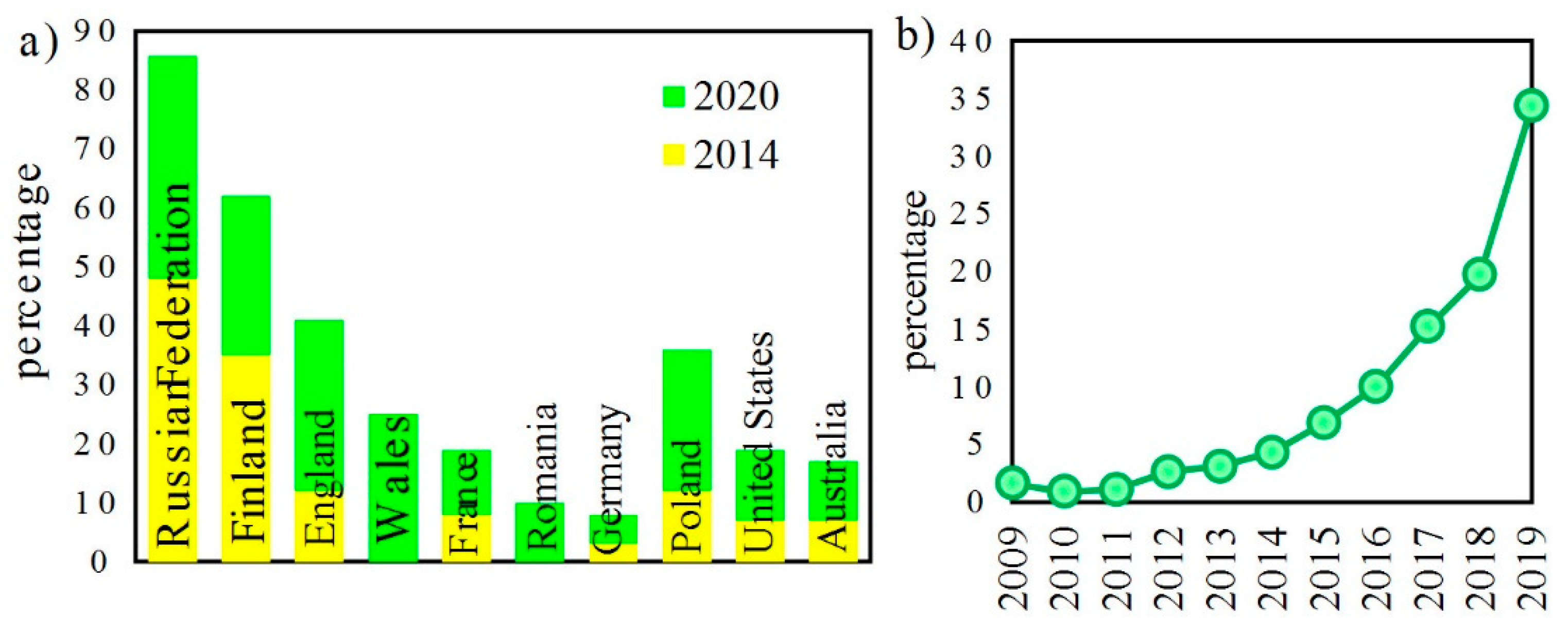
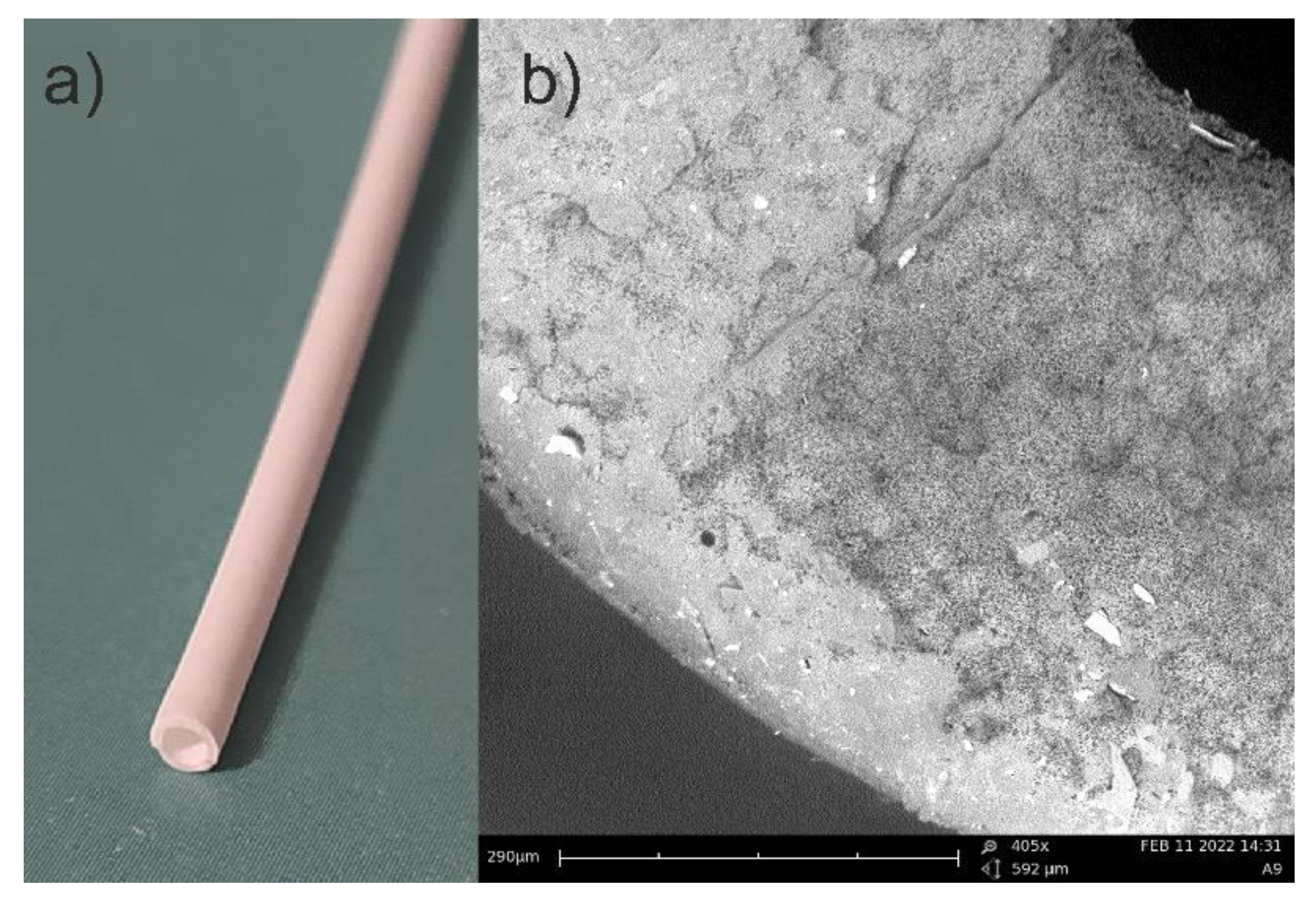
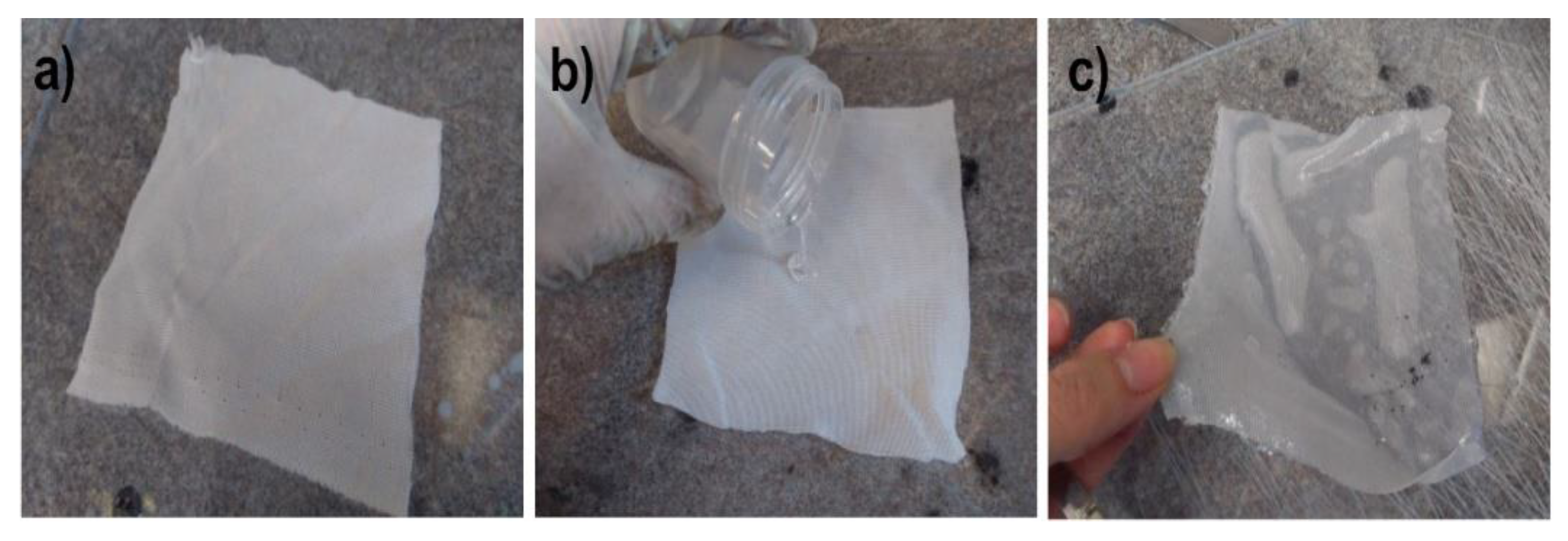


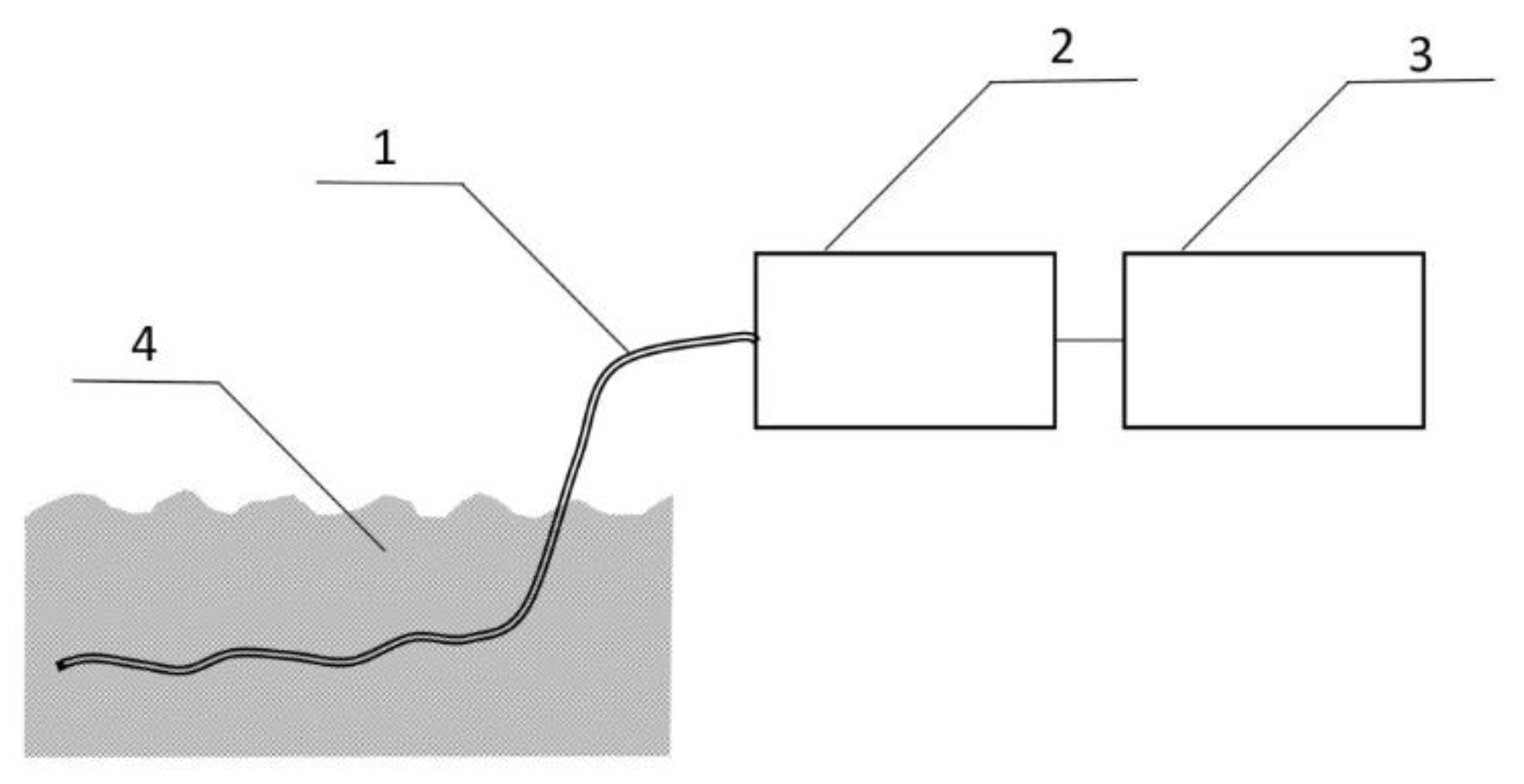
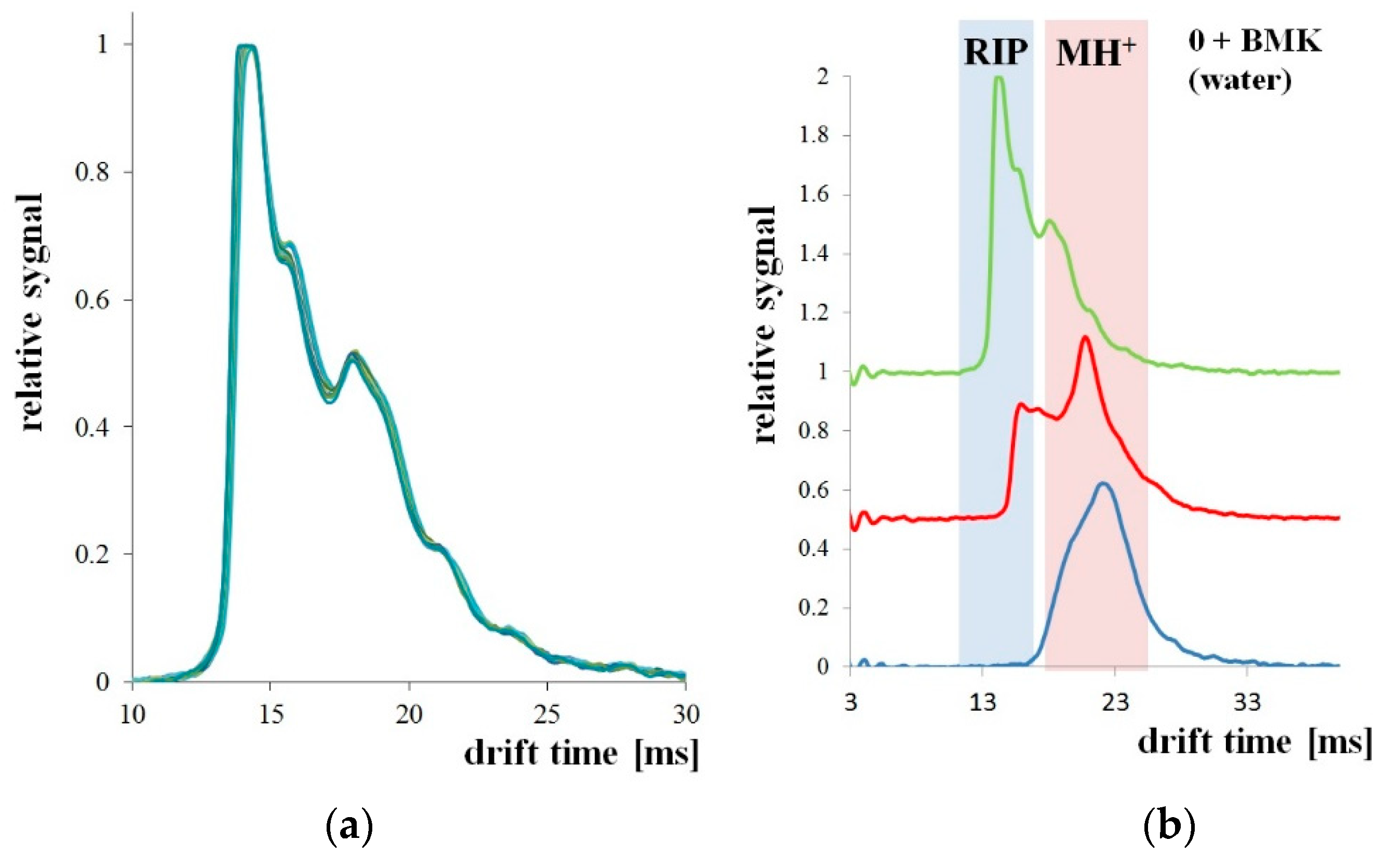
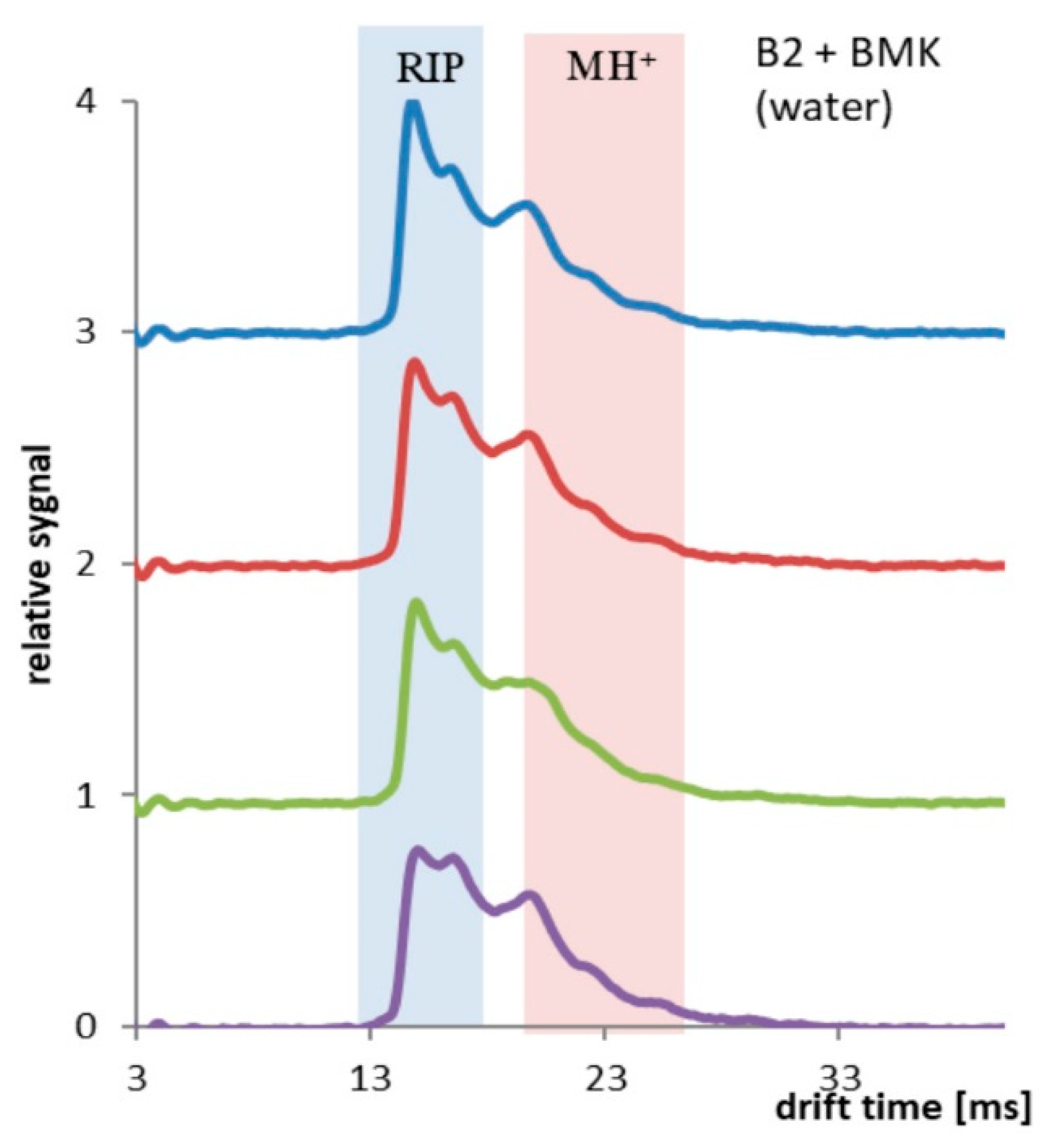
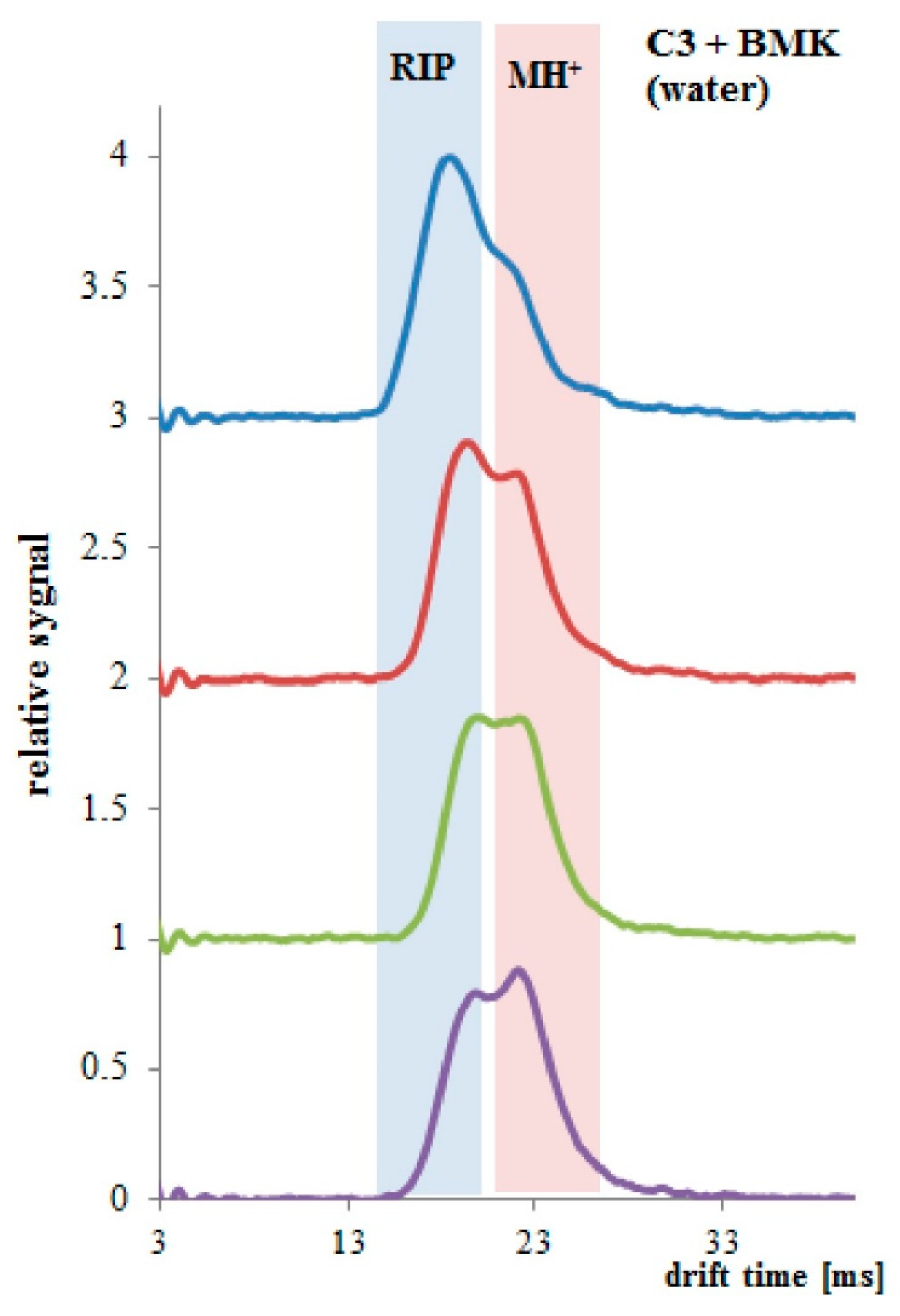
| Sample | Dry Air Inlet | Humid Air Inlet | Dry Air Outlet |
|---|---|---|---|
| membrane B3 | TDP = −45.5 °C RH = 0.26% | TDP = 19 °C RH = 83.1% | TDP = −40.8 °C RH = 0.44 |
| membrane B4 | TDP = −46 °C RH = 0.24% | TDP = 19 °C RH = 83.1% | TDP = −41.2 °C RH = 0.42% |
| PET membrane | TDP = −45.5 °C RH = 0.26% | TDP = 19 °C RH = 83.1% | TDP = −44.9 °C RH = 0.26% |
| Sample | PSi | Mass before Coating | Mass after Coating | % Mass Change | Calculated PSi Thickness x | Remarks |
|---|---|---|---|---|---|---|
| g | g | µm | ||||
| 0 | none | 1.331 | uncoated | |||
| A1 | Sylgard 184 | 1.223 | 1.507 | 23 | 39 | 1 × coated |
| A2 | Sylgard 184 | 1.235 | 1.618 | 31 | 52 | 2 × coated |
| A3 | Sylgard 184 | 1.281 | 1.666 | 30 | 51 | 3 × coated |
| B1 | Polastosil M-500 | 1.280 | 1.512 | 18 | 31 | 1 × coated |
| B2 | Polastosil M-500 | 1.220 | 1.454 | 19 | 32 | 2 × coated |
| B3 | Polastosil M-500 | 1.252 | 1.483 | 19 | 32 | 3 × coated |
| C1 | Polastosil M-2000 | 1.209 | 1.527 | 26 | 44 | 1 × coated |
| C2 | Polastosil M-2000 | 1.242 | 1.548 | 25 | 42 | 2 × coated |
| C3 | Polastosil M-2000 | 1.217 | 1.526 | 25 | 42 | 3 × coated |
Publisher’s Note: MDPI stays neutral with regard to jurisdictional claims in published maps and institutional affiliations. |
© 2021 by the authors. Licensee MDPI, Basel, Switzerland. This article is an open access article distributed under the terms and conditions of the Creative Commons Attribution (CC BY) license (https://creativecommons.org/licenses/by/4.0/).
Share and Cite
Wiśnik-Sawka, M.; Maziejuk, M.; Fabianowski, W.; Karpińska, U.; Szwast, M.; Weremczuk, J. Capillary Sensor for Detection of Amphetamine Precursors in Sewage Water. Polymers 2021, 13, 1846. https://doi.org/10.3390/polym13111846
Wiśnik-Sawka M, Maziejuk M, Fabianowski W, Karpińska U, Szwast M, Weremczuk J. Capillary Sensor for Detection of Amphetamine Precursors in Sewage Water. Polymers. 2021; 13(11):1846. https://doi.org/10.3390/polym13111846
Chicago/Turabian StyleWiśnik-Sawka, Monika, Mirosław Maziejuk, Wojciech Fabianowski, Urszula Karpińska, Maciej Szwast, and Jerzy Weremczuk. 2021. "Capillary Sensor for Detection of Amphetamine Precursors in Sewage Water" Polymers 13, no. 11: 1846. https://doi.org/10.3390/polym13111846
APA StyleWiśnik-Sawka, M., Maziejuk, M., Fabianowski, W., Karpińska, U., Szwast, M., & Weremczuk, J. (2021). Capillary Sensor for Detection of Amphetamine Precursors in Sewage Water. Polymers, 13(11), 1846. https://doi.org/10.3390/polym13111846







